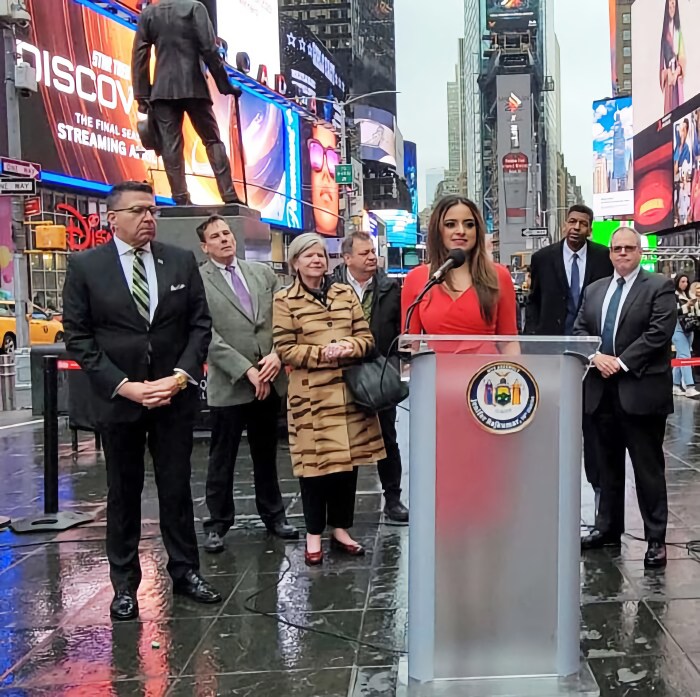Coming from people who know the value of a day, Food Day on October 24 presented an opportunity to inspire people to seek healthy, affordable food and to encourage them to rebuild their personal connection to food and its impact on their health. In this high-tech, fast- and processed-food world, people—especially young people—have become disconnected from the food they eat, where it comes from and its effect on the environment.
Today, children from all walks of life– urban and rural, wealthy and poor—spend extraordinary amounts of time in front of computers, smart phones and television screens rather than outside. It’s no wonder we’re hearing stories of kids who don’t even know that carrots are grown in the ground. Although modern technology has helped educate today’s youth about the wide diversity of plant and animal species and the interconnectedness of food production with the health of our planet, an intellectual understanding is no substitute for the keen emotional attachment and sense of ownership that come from experiencing the bounty of nature firsthand.
Even the dictionary has short-changed nature. publishers of the Oxford Junior Dictionary decided that words describing some of nature’s most ubiquitous creatures and wonders — beaver, dandelion, otter, acorn, clover, ivy, nectar and willow, for example — had to be replaced by terms like blog, MP3 player, voicemail and broadband.
Imagine how appalled Walt Whitman, the author of “The First Dandelion,” would be to discover that America’s children will soon have no way to find the meaning of the word used to describe the object of a treasured childhood experience — blowing dandelion seeds.
Further distancing the younger generation from the roots of our food supply is the popularity of fast food. Each day, one in four Americans eats in a fast-food restaurant. Forty percent of American meals are eaten outside the home. Shockingly, children often recognize the McDonald’s logo before their own name, and 25 percent of children’s total vegetables are consumed in the form of potato chips and French fries.
Farmer’s markets, which are on the rise across the nation, offer a promising opportunity to help children connect the dots between food on their plate, their personal welfare and the sustainability of our planet. In selling locally grown, natural and organic produce and products, farmers have become small-scale teachers and naturalists, educating consumers about the superior quality of their products and helping children and families recognize the relationship between food production and the earth’s seasons and ecosystems.
The good news is that almost 7,200 farmers markets are in operation across the United States. Farmers markets are also no longer restricted to high-income shoppers, as nearly 12 percent of reporting farmer’s markets now accept Supplemental Nutrition Assistance Program dollars (SNAP), formerly called food stamps. Some programs, such as the Freshfarm Market at the White House and others in D.C. markets, participate in the Double Dollars program, which doubles the value of purchases made with SNAP dollars at farmers markets for up to $20 a week. Physical food stamps have been replaced by “electronic benefit transfer” cards, (or EBTs) but not all farmers markets can afford the wireless card readers nor deal with the inevitable bureaucracy that attaches to participating in federal programs. Nonetheless, with sales moving toward $4 million, SNAP sales are an increasingly important source of income for local and regional farmers and a great place to reconnect children to real food.
(For a list of farmers markets accepting SNAP (food stamps) in your community, please click on this link.
http://action.earthday.net/p/salsa/event/common/public/index.sjs?distributed_event_KEY=644)
Farm-to-school programs also can rebuild once-common links between young people, the food they eat and its ties to the environment. These programs bring fresh produce from local farms directly to school lunchrooms. Participating public schools and public charter schools receive an extra five cents for each lunch served containing a component made entirely from locally grown food. School garden programs connect students to real food by teaching them how to grow and cook it. Some cities have created full-time school garden specialists and are focusing on underserved students who are learning about and growing their own healthy food. A number of important studies clearly demonstrate that children involved in garden-based education have improved test scores, particularly in math and science.
Connecting our children with healthy, real food– its vibrant colors, smells and tastes—and with farmers who bring these products to our table is an important step to righting a serious wrong and building a smarter, healthier, and ready-to-compete generation.
Pouillon is a champion of organic, environmentally conscious cuisine and is chef/owner of Restaurant Nora, the first certified organic restaurant in the country. She is also an Earth Day Network board member. Bass is senior vice president of nonprofit organization Earth Day Network, which is a leader in the green schools, healthy lunch, and green economy campaign.

























